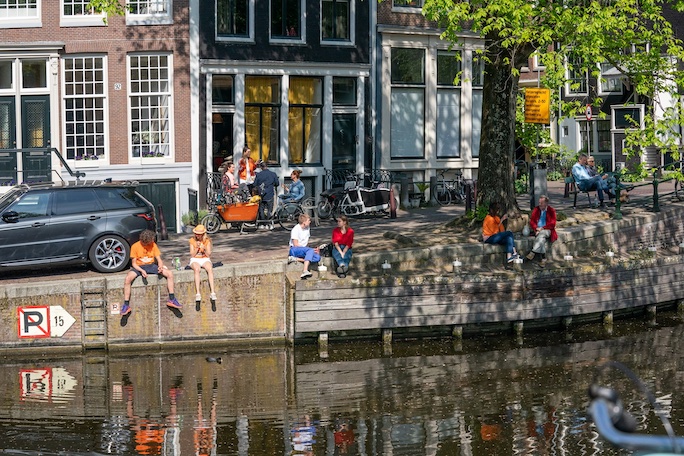
By Kevin Wilkerson, PubClub.com Amsterdam Blogger
Before I send you to the Red Light District and off to the coffee houses and bars, here’s what to expect regarding attitudes, customs, transportation, weather and more in Amsterdam.
Myths and Legends of Amsterdam
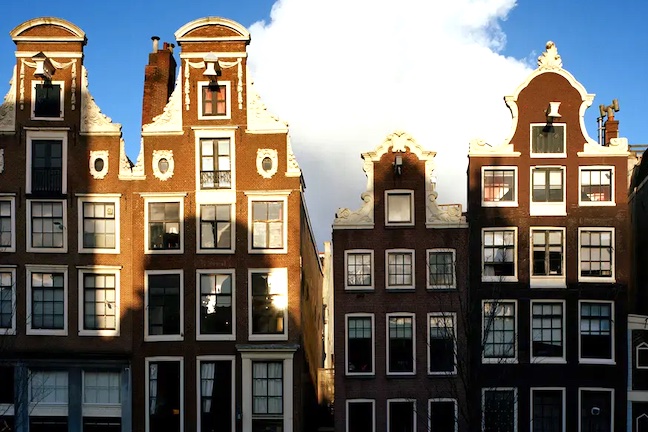
Contrary to what is said on other web sites, in guidebooks, on travel shows, and even by some people who have traveled to the city, there is much more to Amsterdam than the town’s sinful sides.
In fact, this comprises only a small part of this extraordinary place. Amsterdam is one of the world’s oldest cities, dating back to 1275. Named after the dam built on the Amstel River, it has an intricate system of canals that embrace the city, making it one of the most scenic destinations in all of Europe.
The buildings are historic and the colorful trams are moving landmarks. There is tremendous nightlife, further enriched by the fact that it’s possible to party with locals as well as other travelers.
To fully appreciate Amsterdam, move beyond the Red Light District and coffee houses and reach out to discover the city.
We’re Here – Info For When You Arrive In Amsterdam
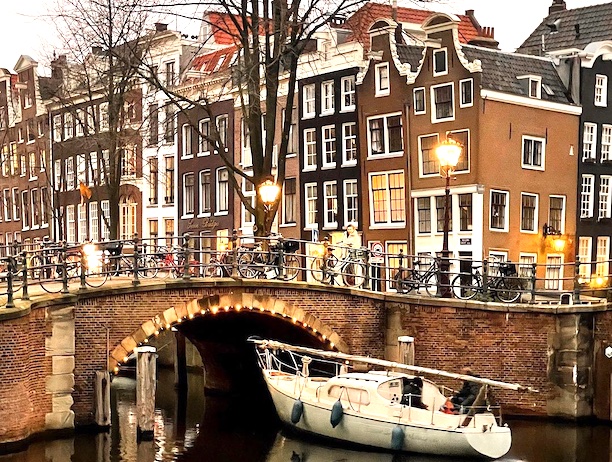
Arrival into Amsterdam is via plane, train or ferry. The latter two puts travelers at the base of the city at Centraal Station, while the former is outside of town. A local train operates between the Centraal Station and Schiphol Airport (travel time is about 30 minutes). Don’t worry about layovers at Schiphol; soon travelers will be rerouting themselves to experience them here. There was talk of putting in a mini-Red Light District right in the airport in what would have been the ultimate “layover.” Rather, the airport now features diversions such as exhibitions from another of the city’s famed landmarks, the Rijksmuseum.
In town, transportation is cheap and it efficiently whisks riders to their destination. Trams numbers 4 and 9 go to the Rembrantsplein, while numbers 1, 2 and 5 go to the Leidseplein. If you don’t have a destination, check with the tourist office (VVV) in either the airport or the train station. There is an office both inside and outside the train station, a main office across the street at 5 de ruyterkade and in the Leidseplein. It also features wireless Internet service, ideal for checking PubClub’s other articles on where to go and what to do in Amsterdam.
Getting Around Amsterdam

Metro, tram and bus services run until midnight and night buses operate until morning. Taxis are a reasonable option, often the best when the effects of Amsterdam’s pleasures are in full effect.
Forget about attempting to drive. You will either get lost, cause an accident, get your car booted because you parked illegally or, mostly likely, all of the above will happen.
Upon arrival in Amsterdam, spring for a strippenkaart. This is not a free pass to the Red Light District but a series of tickets for the trams. A strippenkaart costs 7 euros and it takes anywhere between 2 and 3 stamps to get from one point to another A 24-hour travel pass costs 6.60 euros and is good for 24 hours from first use on the trams and the buses. They have attendants on the front and back of each tram who stamp your travel passes and strippenkaarts.
Walking is another option. Amsterdam is pedestrian-friendly, safe and surprisingly compact. It’s not much more than a half-hour from one destination to the next.
One of the best ways to get around town is on a bicycle. Rental places abound (see Post Party for more information), but be sure and lock the bike wherever you go. Once again, lock the bike. There are 500,000 bicycles in Amsterdam and 1 million reported thefts a year, so you do the math. Rental agencies charge hefty replacement fines, up to fl700.
The scenery at the leisurely pace of walking or biking is riveting. Historic three-story buildings hug peaceful canals, which are connected to narrow cobblestone streets by small, arched bridges.
It’s important to be observant of the street traffic. Mechanical objects tend to whiz by without apparent regard to pedestrians, particularly in the daytime. Trams do not slow down, so watch before you step and use crosswalks whenever possible. Locals on bikes are especially indifferent to pedestrians, making them more of a menace than the trams.
Where are We? How To Avoid Getting Lost In Amsterdam
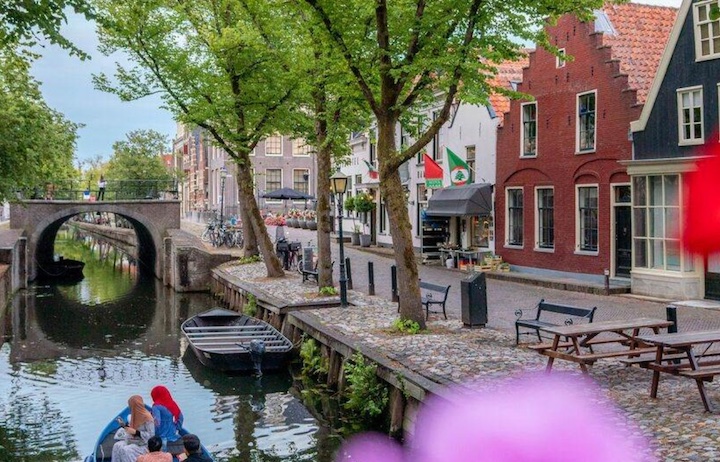
Visitors both love and loath the canals in Amsterdam.
The beauty of the canals makes them ideal photo locations, and there are plenty of such opportunities, because to get anywhere, you have to constantly crisscross the canals.
Unfortunately, they all pretty much look the same. The buildings are all similar in design and some streets change names every few blocks. This leads to a lot of confusing moments as you try to figure out on which canal you are standing as you search for any recognizable landmark. Stay cool, carry a map and don’t be shy about asking locals for directions.
There are hundreds of canals, but only three main ones. Going outward from Centraal Station, there is the Herengracht (Gentleman’s Canal), Keizersgracht (Emperor’s Canal) and Prinsengracht (Prince’s Canal). Adjacent streets are named for the appropriate canal (an example of an address is Keizersgracht 25). These canals are framed by the Singel (Sin-gail) on the inside and the Singlegracht on the outside.
The Dutch word for canals, by the way, is “gracht.”
Another interesting characteristic of Amsterdam is the multitude of narrow alleys. Too small for cars, they provide safe and fun walking routes.
If there is a Main Street of Amsterdam, it would be Damrak. This is the busiest road in town (with the possible exception of Leidsestraat), is touristy and has the prices to prove it. They do serve beers in large, German-style mugs here, as opposed to the “tiny Hineys” offered in most of the pubs.
Headed south from the train station (away from the river), the popular Grasshopper Coffeeshop is on the left. In addition to making an excellent landmark, the Grasshopper serves as a gateway to the Red Light District.
Mid-city is “The Spui” (pron. Spow), an after-work hangout for locals. The Leidsestraat is another big tourist street that leads to the Leidseplein (Lights-a-pline). Many streets end in the word “straat,” which means street. The Leidsplein — “plein” is Dutch for town square — and Rembrantsplein (proun. Rembrandt’s plien) are the prime party places in Amsterdam. Dozens of pubs and clubs, coffee houses, cafes and cheap-eats comprise these areas.
Tourists and the younger crowd (20s) congregate primarily in the Leidseplein while locals and the slightly more mature crowd (late 20s-early 40s) frequent the Rembrantsplein which, by the way, was named after the famous Dutch painter whose likeness looks out over the square.
If this were the 1500s, we would be directing you to Dam Square at the end of Damrak, where goods from the Far East were sold at auction. Today, it’s a good landmark and the heartbeat of the pigeon social scene. As with any place you visit, it’s a good idea to invest a few sober daylight hours walking around and noting landmarks.
We also suggest a canal tour on a boat to help familiarize you to, and educate you about, the city (see Post Party for more information about the canal tours).
Amsterdam Pubs and Clubs Customs
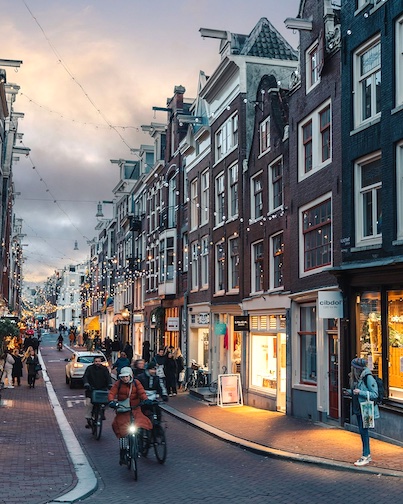
Okay, there has to be a catch here somewhere. All the insane revelry available here can’t come without some kind of a price.
In Amsterdam, it’s not the cost of the drinks or even the admission to the clubs (both of which we noted earlier can empty a wallet quicker than pickpocket in Centraal Station) that poses a problem, but the confounding door policy at the pubs and clubs. It is not uncommon to approach a place, be it empty or packed, and be turned away by the words “private club” from an unconcerned doorman.
This is Amsterdam’s dirty little secret. Many of the pubs and clubs have unposted “appearance” codes, some require you to be in the company of a local and a few have a strict “no tourists” policy (particularly if you are not of Northern European heritage).
Since we’re tourists, this could present a problem. It’s primarily evident in the locals-heavy Rembrandtsplein but can apply anywhere.
As a countermeasure, look well groomed, presentable, and be pleasant. This doesn’t mean jeans are unacceptable but guys, shave the stubble and leave the baseball cap at home. Well-dressed and attractive women usually need not worry about such things but the rules can apply to anyone.
The best strategy is to become the doorman’s buddy. This is accomplished by arriving a bit early on your first night in town, say before 10 p.m. Stop in for a drink or two and on your way out, tip your new best pal 1 or 2 Euros. Do this at several places. It’s a local’s move and it will gain you VIP treatment when you return later in the evening.
Clubs requires another trick. Start in a pub and ask a local about current door policy at different clubs (it’s also a good ice-breaker with the regulars). Enforcement is spotty, often changing on different nights of the week. Offer to buy a local a drink if they will escort you into one of the clubs.
More information on an individual club’s door policy is available in our Pub Clubbing section. With this hurdle cleared, you now are free to experience the wonderful world of PubClubbing, Dutch style.
The Dutch serve their brews in small 10-ounce glasses with a precisely-measured ounce of foam (2-3 euros at pubs, more at clubs). Little more than a shot glass to an Aussie or a Texan, these “tiny Heineys” would seem to offer little resistance to heavy drinkers. Yet with so many bars to visit, they make it easy to be mobile and the cumulative effect they have over the course of an evening can indeed be quite intoxicating.
When those tiny Heineys start to overflow your system, nature will call you to the WC (toilet). Many are staffed by a women who keeps the WCs clean. To use the restroom it will cost between 0.2 and 0.5 euros. In the pubs, drop change in the container by the door on the way out; anything less or nothing at all will label you as cheap.
Most of the bars and pubs are small and narrow, yet each has a unique personality and crowd all its own. They go strong until 3 a.m. The clubs are massive, holding anywhere from 500 to 1,000 people. They don’t open until midnight but stay open until 6 a.m.. Most places deal in cash, so have plenty of euros on hand. You’re going to need them.
The Language In Amsterdam
There’s a lot of grunting involved in speaking Dutch. It’s a harsh Germanic and contains a lot of letters and syllables, and the letter “j” sounds like “y.” Fortunately, the international language of PubClubbers is well understood: Beer!
The word for cheers is: Prost! (Pronounced “Prozzzt!”)
English is spoken freely. Amsterdamers will not object to speaking to you in any language they speak and it’s certainly not necessary to learn Dutch in order to thrive here. As is always the case, it’s polite to at least make an effort to speak the local lingo.
Herre’s a look at some other helpful terms:
• Ja (Yaw): Yes
• Nee (Nay): No
• Dank u (Dank ya): Thank you
• Goede dag, Hallo (Goad dag, hallo): Hello
ŧ Tot ziens: Goodbye
• Goede morgen: Good morning
• Goede middag: Good afternoon
• Goedenavond: Good evening
• Goede nacht: Good night
• Hoe heet je?: What is your name?
• Leuk je te ontmoeten: Nice to meet you
Amsterdam Currency – The Euro
The Dutch have shelved the guilder (referred to as “fl”) in favor of the Euro.
The euro comes in 5, 10, 20, and 50 cent pieces and 1 and 2 euro coins. The bills start at 5 euros and they have 5, 10, 20, 50, 100, 200, and 500 euro bills. But, most places in the city do not take 200 and 500 euro bills so carry smaller bills. Also, it is primarily a cash oriented society so do not be surprised if your card is not good for anything but the ATM. Be aware that most U.S.-based banks charge a convergance fee in addition to the normal ATM fee.
Pubs, most clubs and some restaurants do not accept plastic so even if you are everywhere you want to be, your credit card may not be there with you. There are plenty of machines for local banks but international ATM access is limited; be sure and check the symbols before inserting your card. American Express has an automated machine on the lower end of Damrak that spills out euros on credit but watch for pickpockets targeting you there. Money exchange offices are plentiful, especially on Damrak, but we advise steering clear of these euro-munching tourist traps.
Monthy Temperatures In Amsterdam
March-May (Spring): Ę47 F
June-August (Summer): Ę62 F
September-November (Fall): Ę51 FĘ
December-February (Winter): Ę38 F
Amsterdam Time Zone
Amsterdam is GMT +1.
When To Go To Amsterdam
Most tourists visit Amsterdam in the summer (June thru September). Because of the city is so compact, it also becomes very crowded. Don’t be afraid to go in the spring, fall or even winter. The weather is not all that frightening outside of December and January and locals and a few European tourists still fill the pubs and clubs. King’s Day is April 30 and that’s an awesome time to go for people who want to party